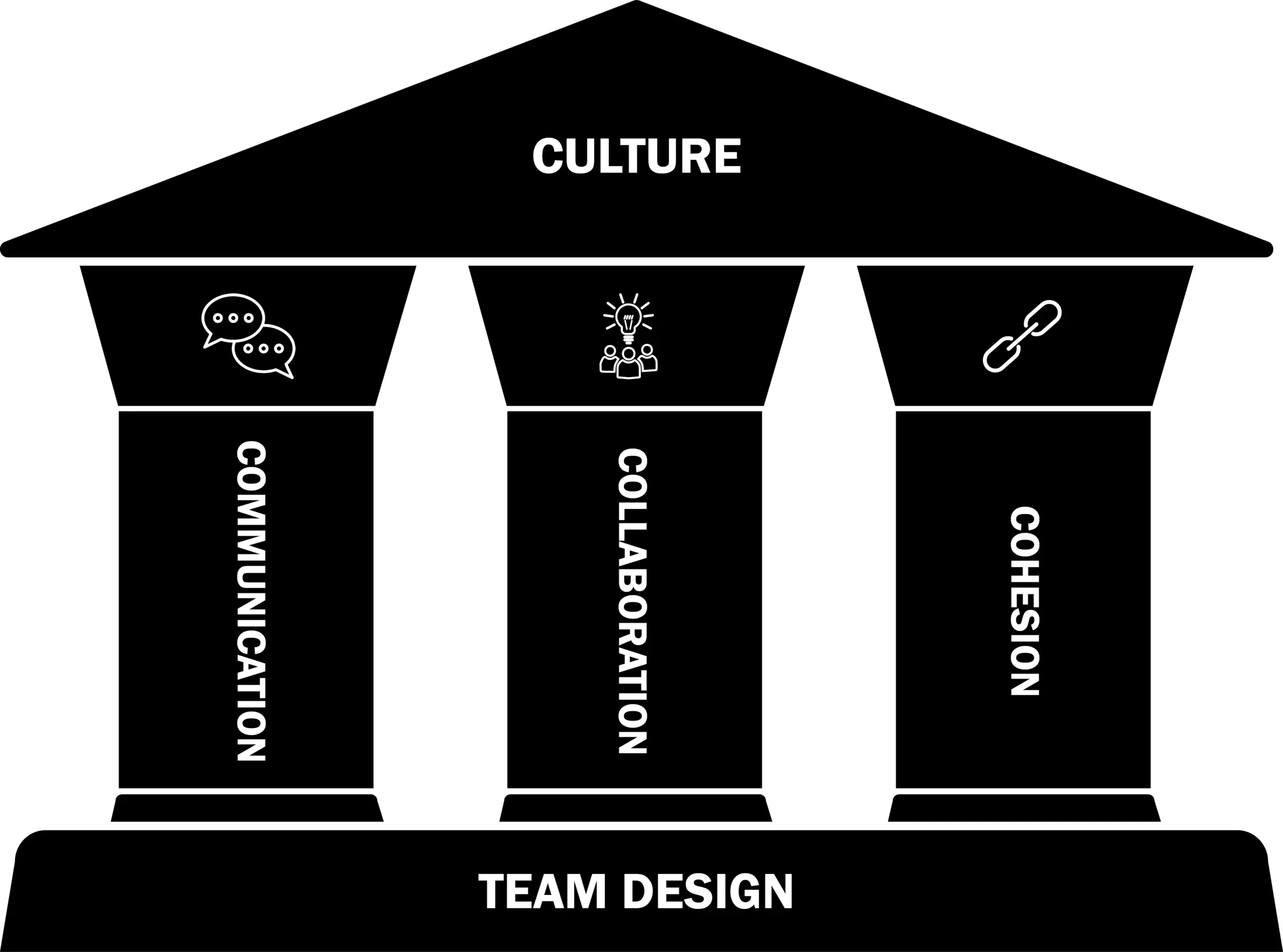There is a cadence to most everything in life. It’s a rhythm that runs through our lives, our work, our relationships and more. We can learn more about our work culture when we recognize its cadence. Adjustments to the underlying cadence can add value and desirability to our work culture more quickly than we think.
A Framework
In our book, The Long-Distance Team, we introduced the 3C Model for Team and Culture Design.

Communication, Collaboration, and Cohesion all play a role in understanding our current culture and creating and maintaining the culture we desire. There are components of work cadence that connect to each of these three elements.
The Five Cadences
- The Cadence of Meetings. How frequently your team meets depends on the nature of the work and the size of the team. Some teams have daily huddles, others meet weekly or even monthly. Your current cadence says something about all three of the C’s in the 3C Model. Are your meetings helping you reach your desired results? Do you need more or less of them? At what frequency will they be most helpful?
- The Cadence of Collaboration. Some teams need to collaborate often and frequently – others perhaps less so. Quantity, frequency, and effectiveness of your collaboration can have huge impacts on your culture and results. How frequently are you encouraging or expecting the team to collaborate in brainstorming, problem solving, decision making, and priority reassessment? This could be with or without a formally scheduled meeting. Would having more (or less) frequency here favorably impact communication, empowerment, engagement, or accountability?
- The Cadence of Coaching (and one-on-ones). I’ve asked hundreds of leaders about the frequency of their one-on-ones with their team members. And there is a direct correlation between the frequency and the effectiveness of the leader and the team. If your results aren’t where you want them to be, consider increasing the frequency of your one-on-ones. They give you a real chance for formal and frequent coaching (among other things), contributing to an engaged, improving team. What is your current cadence of coaching and one-on-ones?
- The Cadence of Interactions. Communication is something that most everyone – even in highly effective teams – feels could be better. But it isn’t just the need to transact business and share information. Usually, there is also a need for more interaction. Interaction provides the chance to build relationships and trust, increasing the cohesion and foundation of the team. How much time are you providing for interaction in group settings? Are your team members comfortable talking with their colleagues about more than just the work and the weather? If your team is short on interaction (especially a team operating at a distance), think about your cadence of interaction.
- The Cadence of Learning. The cadence of learning relates to how much and how frequently people are learning. Yes, this includes training. But it is also information sharing, mentoring, book clubs, cross training, and so much more. Do people see learning as a part of their role? If so, is there time regularly available and set aside to support that learning and development?
How to Use These Work Cadences
Five work cadences – all in areas that impact the results you achieve and the current culture. Think about your current and desired cadences – the frequency, richness, and effectiveness of each across your team. You can use these in three ways:
- As a diagnostic tool – How do our current work cadences affect our results?
- As a coaching tool – If one or more of these are significantly different across team members, it may be a source of varying results.
- As a communication tool – Work with your team to identify and define the current cadences. Use that as the starting point to build and maintain the culture you want, yielding the results you need.

0 comments